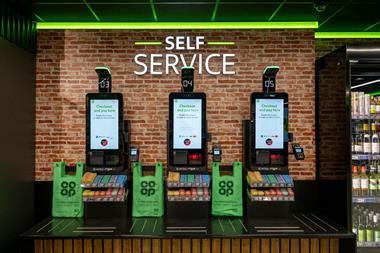An analysis of regional differences in bra sizes and a count of supermarket shopping trolleys are just two of the information requests the Office for National Statistics has received through its work as the census organiser for England and Wales.
The last census occurred in 2001 – the 20th in the history of the modern census – but the information continues to be used today. The once-a-decade population count may seem far removed from the everyday operations of most retailers but, in fact, the census is the basis for many information products that retailers are using to help them decide who their customers are and what they want and need.
Mass immigration, changing family structures, social mobility and even altered economic conditions all affect who retailers’ consumers are and how they are likely to behave. Because of this, retailers are increasingly turning to geodemographics, or demographic information that is broken down to the local level to help them plan for the future.
Office for National Statistics executive director for the Census Glen Watson explains that the 2001 census solicited a 94 per cent response, providing not just a population count at national and local level, but also details on factors such as family structures, ethnicity, occupations, illness and disability.
There has been profound social change since the 2001 census. For instance, there will be 25 per cent more over-85s by the time of the 2011 census than there were at the 2001 census. So the information providers that retailers work with are having to respond to that change.
Acxiom UK spatial intelligence team leader Stewart Dickson says: “The census is the mainstay of the geodemographics market, but it is not dynamic and the emphasis is on public sector requirements.”
Experian Business Strategies head of marketing Rob Haslingden explains that consumer classifications are becoming more dynamic. Factors such as more dimensions of affluence, growth in singles, polarisation in the elderly between rich and poor and the changing social structure of the countryside are all affecting what kind of people live where.
Haslingden explains that new types of neighbourhoods have sprung up since the 2001 census. These include high-spending elders retiring to the country, affluent asian suburbs and double-income couples with no children who live in new-build housing near transport hubs. New emerging neighbourhoods include “virtual villages”, which are rural locations with growing numbers of home workers and neighbourhoods of those delaying retirement either because they are forced to, or because they are keen to, continue working.
He adds that neighbourhood targeting using such classifications is still particularly relevant to retailers that are data-poor. There is an inherent instability in relying on product consumption or purchase data to forecast the future. Also, the environment is still relevant, even if you have product data – for example, you won’t sell many lawnmowers in a neighbourhood where most people live in flats.
Even retailers that do capture and analyse data of their own also use geodemographic information to supplement their work and gather insight into consumers who are not yet their customers.
Giles Pavey, head of customer insight at Dunnhumby, which has run Tesco’s Clubcard scheme since it was introduced in 1995, says the company is now running the third version of its “Lifestyles” customer segmentation. It first introduced the analysis tool in the late 1990s.
Pavey explains that the segmentation technique mirrors human intuition. “If you stand behind me in a supermarket, you would have an idea of me and how I do my shopping. Human beings are really good at making those decisions based on 20 or 30 items on a conveyer belt.” So to replicate this on a grand scale, Dunnhumby has put flags against 25,000 items that Tesco sells, such as “branded”, “vegetarian”, “traditional” or “cooking from scratch”. It can then score each customer based on their attributes compared with the average person, based on the flags associated with the products they choose.
From this information, individual DNA profiles are clustered to identify like-minded groups such as Finer Foods, Healthy, Convenience, Traditional, Mainstream and Price Sensitive.
Guesstimates are not enough
Pavey admits that it would be possible to guess these groups without doing all of the analysis, but Tesco believes it is important, because each shopper is assigned to one of these groups and they define how the grocer talks to its customers.
They are also used to analyse any event in Tesco’s business, such as new stores, health scares and promotions. And it allows Tesco to decide on product mix, especially in stores with a limited range.
Lifestyles is used in conjunction with geodemographic information to model new stores. Potential customers are made up of Clubcard holders and non-Tesco customers. Pavey says: “Geodemographics are used as a basis of a model to predict the lifestyle of non-Tesco customers.” This is then used to project possible customers and realistic drive times.
Some 80 per cent of the transactions by value in Tesco’s larger stores are made with a Clubcard. However, within Tesco’s Metro convenience stores, the usage of Clubcards is much lower. Pavey says that it is possible to separate convenience shopping patterns from the data collected at its larger stores and this can help when making customer-focused decisions for Metros.
Tesco customers, of course, get a payback for allowing the retailer to collect and analyse data on their shopping habits. Pavey says that average quarterly loyalty payment amounts to£8 per cardholder and Tesco has a policy of always including value in the mailings besides information.
Other geodemographic data is collected without the individual consumer getting a payback. It is a legal requirement to complete the census but, even for this basic information, Watson says that it is getting harder to get people to comply. In some areas, the compliance rate was only 70 per cent at the 2001 census.
Dickson says that private sector companies that collect information will increasingly find themselves doing more of the work. Consumers, when they benefit in some way from doing so, will provide them with small chunks of data. Companies such as his will have to piece these chunks together, rather than collecting data through large surveys.
In addition, Dickson believes that bespoke segmentation systems will become more relevant. In particular, as the geodemographic picture across the UK changes it may be necessary to introduce localised or contextualised systems. He gives the example of creating a Polish-speaking segmentation for an area such as Reading. In many parts of the country it would not be necessary, but without it social trends may be overlooked in the parts of the country where it would apply.
A stage on from here would be dynamic segmentation based on events. The way individuals would be classified would depend on where they were and what they were doing at that time. This might sound far-fetched, but it would allow retailers to target consumers when they are likely to be at their most responsive.
Even the census itself will be responding to change after 2011, because it is likely to be the last time it will occur in its existing format. Other countries have modernised their information gathering, opting to collect data every five years, operating a shortened census supplemented with large household surveys or setting up population and housing registers.
In the meantime, the 2011 census will be the next opportunity to take a complete snapshot of the UK population. It will be the first time that census documents have been posted rather than hand delivered. The plan is also for the population to be able to reply online if they prefer and Watson hopes for a 20 to 40 per cent online response rate that will facilitate a quicker analysis of the data. The ONS will begin to release the results in early 2012.
Watson says: “The census remains the bedrock of official statistics. We want lots more consultation on what form the output of the 2011 census should take.”
As consumers tighten their belts and get more picky about who they buy from, tapping into who your potential customers are and how they live will become increasingly critical.
The who and where of the web
The first broad estimate of the amount of personal data collected by internet companies shows that they are gathering data on the tastes and preferences of a typical user several hundred times a month.
The analysis, done by online research firm ComScore for The New York Times, analysed 15 major media companies’ potential to collect online data in December. The count included how many searches, display ads, videos and page views occurred on those sites. This did not include the data that users give when registering for sites or e-mail services, or the information that is published on social network pages.
Online ad networks increasingly use such data to forecast the content and adverts individuals are most likely to respond to.


























No comments yet